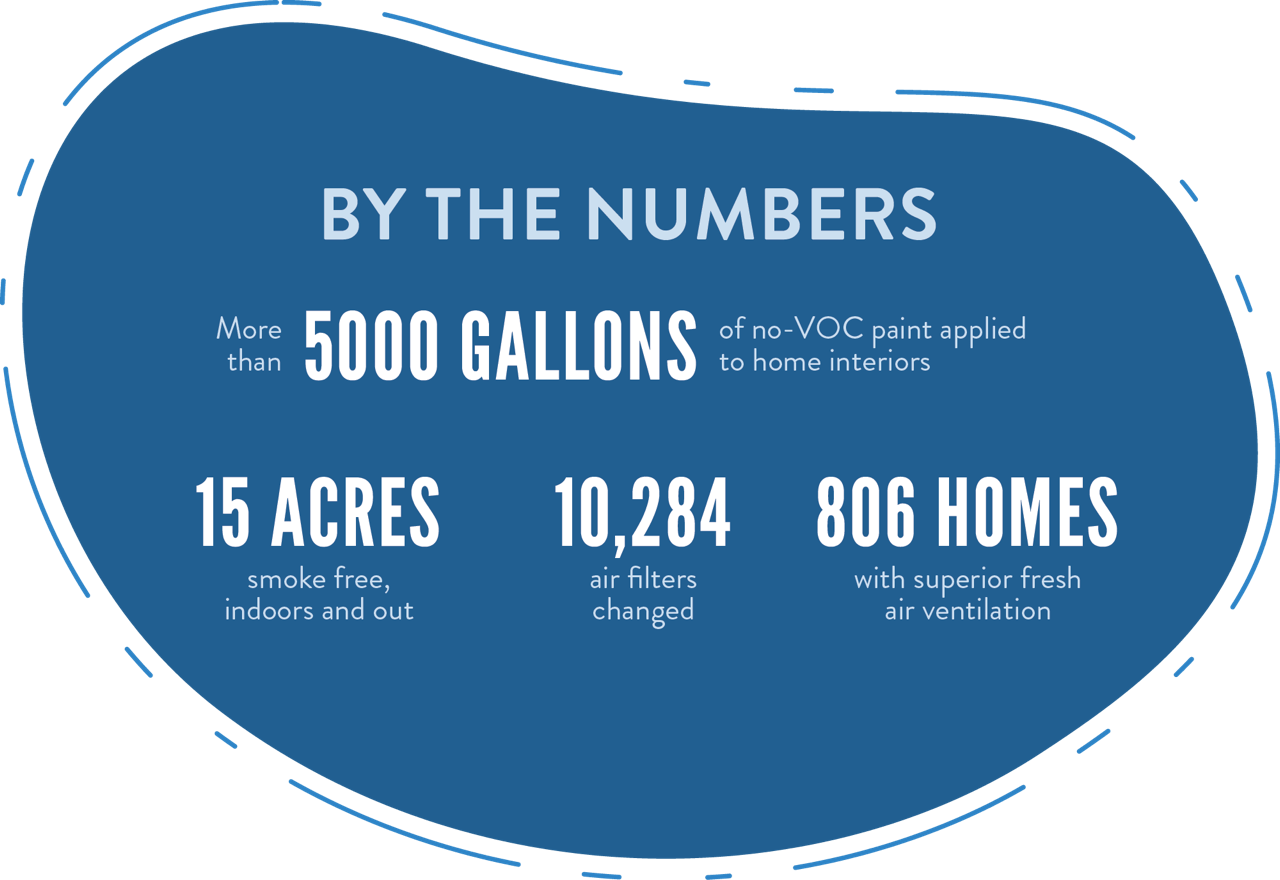
The Indoor Air Quality Pledge at Five

SREG CEO Jeremy Hudson circa 1986. Jeremy’s childhood struggle with asthma led to his commitment to indoor air quality in the homes under his stewardship.
We spend more time at home than anywhere else, and the air inside our homes is closely tied to wellness. Our CEO Jeremy Hudson has a personal connection to indoor air quality: as a child, he suffered from asthma. As an adult, he learned about the link between indoor air quality and respiratory illness. While he sought to improve his own family’s home, he felt a responsibility to apply those same standards to apartments under his stewardship.
From the very start, we knew that air quality was important and the Eco Modern Flats project, our first LEED project, helped us to think through all the ways that we could protect the air inside apartment homes. We took that knowledge and applied it to all the properties we develop and manage, including the properties we had no hand in designing or building. The result was the Indoor Air Quality Pledge, formalized in 2015.
Five years later, we reflect on the impact of the IAQ Pledge. Every apartment we’ve built has superior fresh air ventilation including exhaust fans that vent moisture and particulates from kitchens to the outdoors – a rare feature in apartments. With air quality in mind, we have removed acres of carpet from older apartments, replacing it with hard-surface flooring less likely to retain moisture and allergens. We’ve used no-VOC paint in new construction and in existing buildings. While reducing volatile organic compounds (more commonly known as VOCs) in paint is beneficial to building occupants, our use of no-VOC paint over the past five years has spared painters untold hours of cumulative exposure to chemicals linked to negative health effects.
We’re proud of this performance, but the numbers we feel best about are the numbers we’ll never know. Poor indoor air quality is associated with a host of health problems, including eye irritation, allergies, headaches, and respiratory problems. Of the people who live in apartments under our stewardship, how many asthma attacks never happened? How many colds were a day or two shorter? How many allergic reactions were avoided? We’ll never know, but what we do know is our commitment to maintaining healthy indoor air quality is even stronger than it was five years ago.


